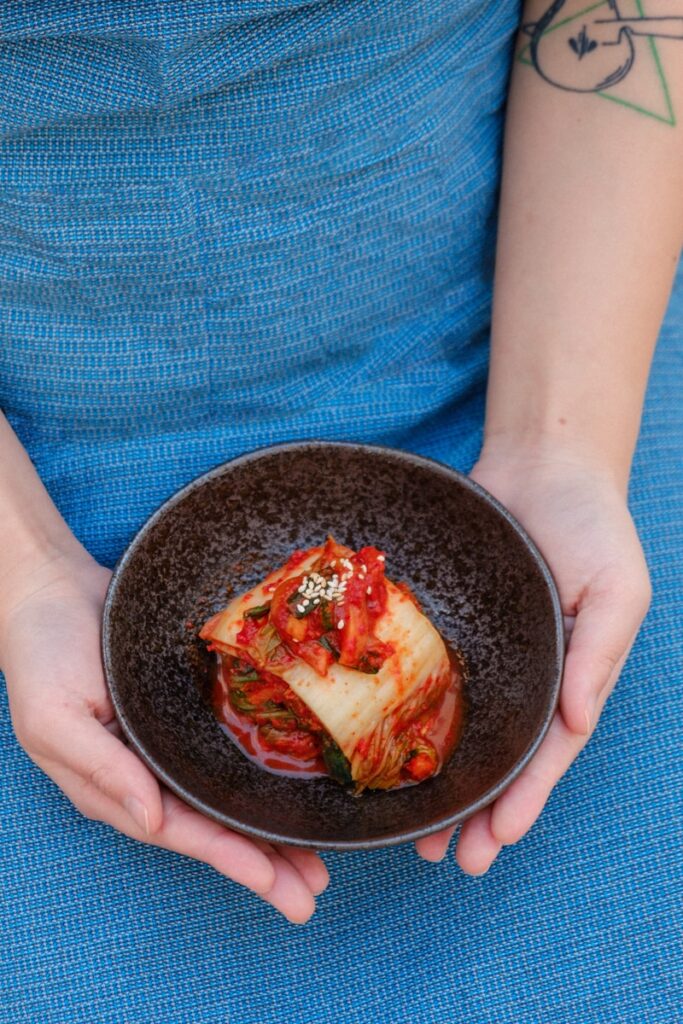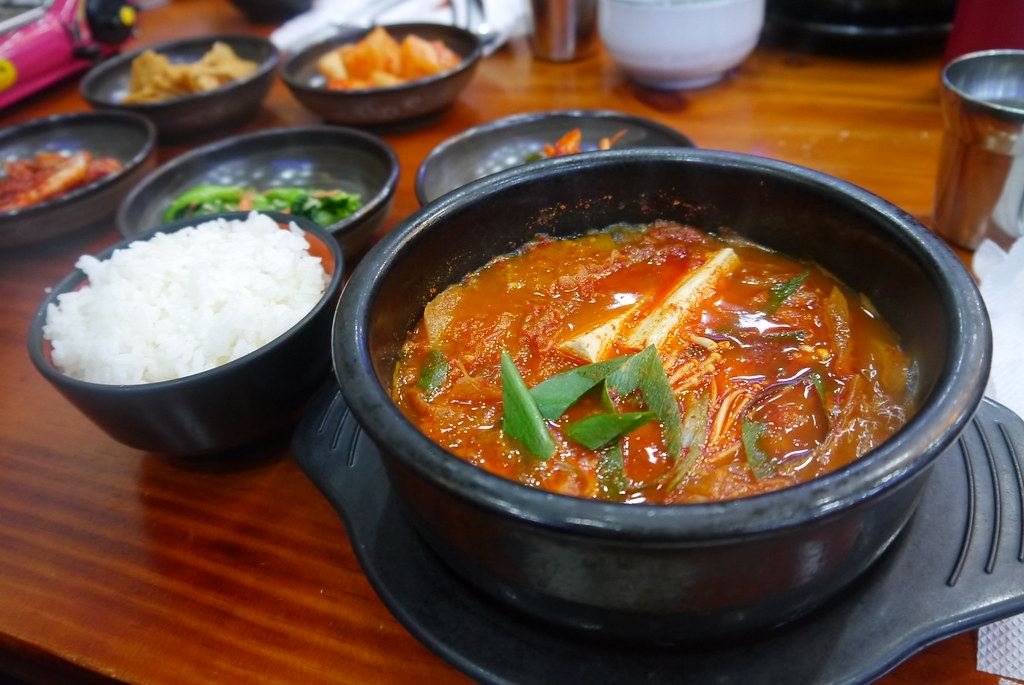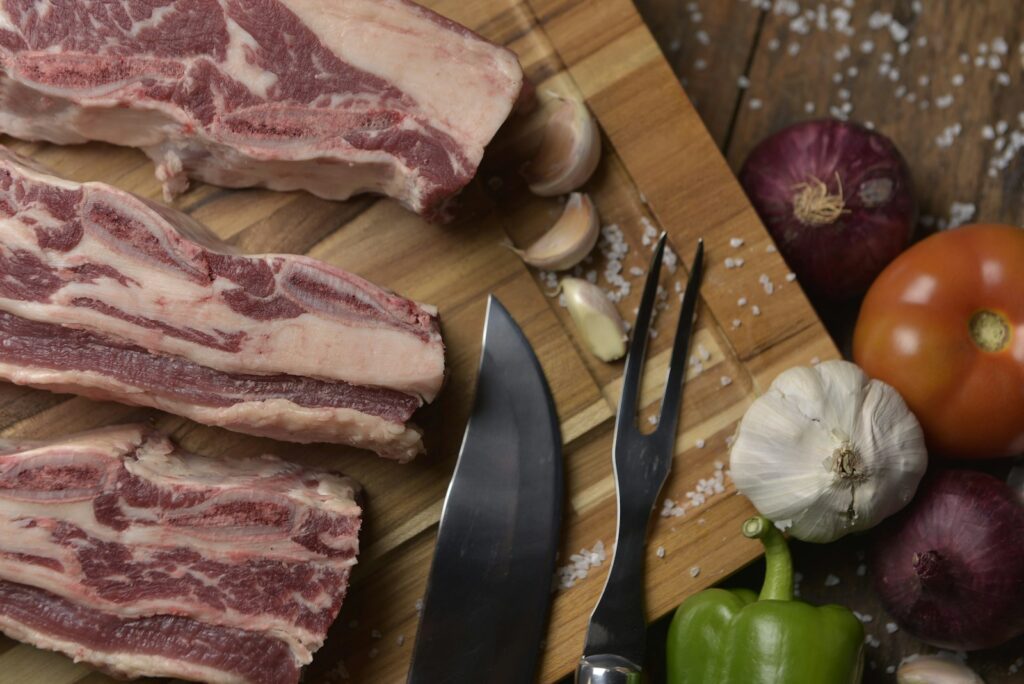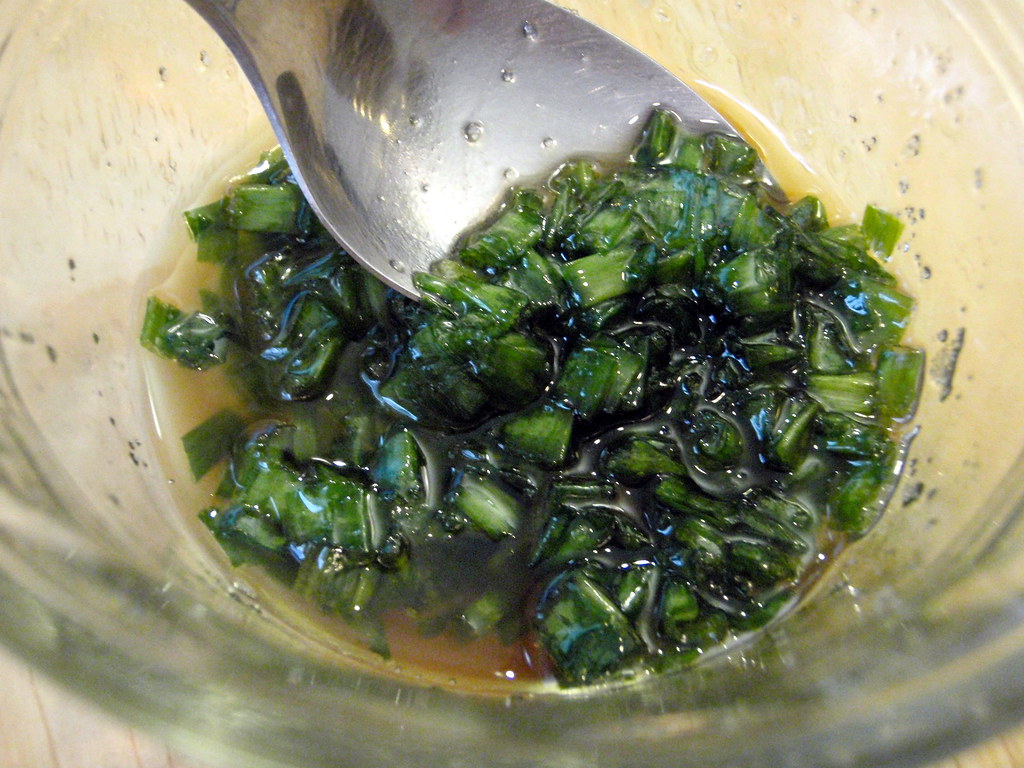Is there anything cozier than a delicious stew that hisses on the stove? Particularly when the calming kimchi and spicy stewed vegetables are combined. Now, I understand your thought process: “Stew? in a warm climate?” Let me tell you, though, there are compelling reasons why this Korean culinary marvel is a year-round event. Regardless of the season, this is more than simply a meal; it’s an experience, a cozy embrace from the inside out. To combat these terrible cravings, doctors prescribe a bowl of this spicy, potent, and utterly gratifying stew amid the busy metropolis hub of New York metropolis, where the weather is as erratic as the stock market.

Let’s talk about the heart of this dish – its ingredients.
The ingredients are really simple: fish sauce, stock, onions, and scallions. But from that moment on, you can achieve anything. Or would it be more appropriate for me to say, “Your ddukbaegi?” It should be noted that this is a traditional Korean clay pot, often used for stewing. This pot is amazing; it can handle heat like a hero and is nearly as hot as the first to ensure that every spoonful is cooked. However, if you don’t have it, you can still unwind—any kind of marijuana is acceptable.
Ingredients:
- Fish sauce
- Stock (anchovy broth is recommended)
- Onions
- Scallions
- Kimchi (sour, fermented)
- Pork belly or shoulder (or your preferred protein)
- Silky tofu
- Garlic
- Gochugaru (Korean red chili flakes)
- Eggs

Key to good Kimchi Soondubu Jjigae: sour, fermented kimchi.
It is the foundation that gives this stew its complexity and individuality. You can add a little white vinegar to your kimchi if you think it’s a little too fresh. When it comes to pork, go for something a little fatty, like pork belly or shoulder, since, let’s face it, fat equals flavor. Silky tofu is the best option when it comes to tofu. It dissolves on the tongue and tastes creamy and subtle.

Even the most inexperienced chef may easily prepare Kimchi Soondubu Jjigae, a straightforward dance move. The broth made from anchovies is a tasty starting point that serves as the basis for all other ingredients. Next, have your meat and spices ready. Then, create some scallion oil, which is the unsung hero that gives the stew a smokey flavor.
Cooking starts as soon as your ingredients are positioned like troops getting ready for combat. Pork first, then broth, and finally broth. Watch as the tastes meld to create something genuinely unique when you stew it with kimchi, onions, and garlic. Be careful when adding the tofu; after all, it’s the show’s beautiful star. Add a little scallion and another egg, and you’ll have a dish of comfort.

Before you do, let’s talk tips.
Keep in mind that this stew dish is personalized. Do you dislike pork? You may either keep it vegetarian or swap it out for beef or chicken. Not able to handle this heat? Gochugaru can be adjusted to suit your tastes. Additionally, always taste as you eat because an overly salty stew is the only thing worse than a simple one.
After presenting the fundamentals of kimchi, let’s explore the art of creating the ideal dish. The intricacies, as well as the small variations that turn a decent dish into a memorable one, are what make a stew unique. Here are some pointers to help you become an expert at Kimchi Soondubu Jjigae so that every bite demonstrates your culinary prowess.
It’s crucial to make a broth that is tasty and substantial. Keep in mind that patience is a virtue in this situation; allow the kelp, onion, and anchovies to simmer away and impart their essence to the water. Just as important is straining, which guarantees a clear, clean-tasting broth that will meld well with the other tastes.
When preparing your ingredients, accuracy is crucial. Carefully slice the garlic, onions, and scallions to ensure that the uniform pieces cook evenly and provide a visually appealing dish. Regarding that pork, don’t be scared of the cuts that are marbled. The fat will break down and combine with the scallion oil and gochugaru to create layers of taste that are hard to resist.
Speaking of scallions, it’s time to give them the attention they merit. The hidden weapon that gives your stew depth is this aromatic oil. Without scorching them, slowly cook those scallions to bring forth their smoky sweetness. Gochugaru and this oil combine to provide the distinctive red sheen that is associated with a wonderful Kimchi Soondubu Jjigae.

Keep in mind that timing is essential when adding components. The pork should no longer be pink before it enters the scene. After adding the broth, everything must be perfectly stewed. Vegetables and kimchi should be soft but not mushy. Their texture and flavor are highlighted by this delicate balance.
For Silk Tofu, the program’s star. Carefully place it into the stew, treating it with the most respect. Since it needs the least amount of boiling time, it should be added last, before the egg. Instead, keep the tofu warm and allow it to absorb the flavors of the surroundings. This is not the time for violent stirring.
The last affluence is accompanied by eggs. Slice it open with confidence and simmer it in a hot stew. Those green onions—what about them? They create a striking contrast to the thick and spicy soup, making them more than just decorations.

Do not forget about the versatility of this dish.
This is the canvas on which your culinary imagination is painted. To get varied flavors, feel free to add fish, mushrooms, or zucchini. For vegetarians, mushroom and vegetable broth can be used in place of the broth with pig and anchovies. There are countless options, and every modification adds a certain charm to the dinner table.
A masterpiece that blends robust flavors and delicate textures is Kimchi Soondubu Jjigae. You’ll find your rhythm, manner, and distinctive style—all of which are definitely yours—in every pot of stew.
Related posts:
Kimchi Soondubu Jjigae
Kimchi stew (Kimchi-jjigae)
The BEST Korean Silken Tofu Soup Recipe & Video



